
Academic Distinctions: A Podcast to Make Sense of American Education
Hosted by Stephanie Melville and Zac Chase, "Academic Distinctions" is a podcast for educators that tackles the reading and research teachers often don't have time for. With experience as classroom teachers, district administrators, and federal policy wonks, the hosts bring a unique perspective to discussions on education's "greatest hits" and current events. The podcast is committed to delivering engaging, informative, and actionable content that is relevant and responsive to the needs of educators.
Academic Distinctions: A Podcast to Make Sense of American Education
004: A pyramid scheme for learning?
Stephanie and Zac unpack the of one of the most famous pyramids in education (Bloom's taxonomy) and attempt to draw a line from its post-WWII origins to the requirement of teachers writing their objectives on the board.
For the second half of the show, researcher Katherine McEldoon joins to offer an alternative way to figure out if students' (and adults') brains are doing the work we hope they are during learning.
Hi, I'm Stephanie Melville.
SPEAKER_00:And I'm Zach Chase.
SPEAKER_01:And this is Academic Distinctions, a podcast where we try to make sense of American education.
SPEAKER_00:You might not be like us.
SPEAKER_01:You might not stalk the teaching and education Reddit boards.
SPEAKER_00:You might not notice there is a frequent complaint among teachers.
SPEAKER_01:Why do I have to put my objectives on the board? Or... Does it really help to put my objectives on the board?
SPEAKER_00:Well, in today's episode, we're going to depart from our usual examination and making sense of the news in education.
SPEAKER_01:Instead, we're going to look at a very common practice.
SPEAKER_00:Not just a practice, but a requirement.
SPEAKER_01:Okay. A requirement of modern teachers, writing their objectives on the board.
SPEAKER_00:If you've taught in any public classroom in the last three decades or so, you were probably told by a coach, a principal, an AP, or a consultant, you need to put your objective on the board.
SPEAKER_01:They usually start something like, students will be able to, and then end either in some version of an academic standard or a description of the work to be done in class that day.
SPEAKER_00:I even had a colleague who had the same objective on the board for weeks at a time.
SPEAKER_01:And at its height, this was something teachers would get dinged on in their regular evaluations.
SPEAKER_00:The lesson was great, but I didn't see the objective on the board. At
SPEAKER_01:some point, objectives on the board were almost considered necessary or equivalent to students actually learning.
SPEAKER_00:This had its origins in research.
SPEAKER_01:Shh, no spoilers.
SPEAKER_00:Okay.
UNKNOWN:Okay.
SPEAKER_01:Our hypothesis is this practice has its roots all the way back to just about the end of World War II, and it starts with a guy named Benjamin Bloom.
SPEAKER_00:Now, Benjamin Bloom was an educational psychologist, and he and some colleagues started in the late 1940s trying to solve a problem we'll get into in a second. But first, one piece of housekeeping. If you have been a classroom teacher sometime in the last 40 years or so, and you hear the words Bloom's Taxonomy... you just got a picture in your head. That picture is probably a triangle. Many people might call it a pyramid, but it is a triangle.
SPEAKER_01:And depending on when you first saw this triangle, it might look a little bit different.
SPEAKER_00:At the bottom is either the word knowledge or remembering. And
SPEAKER_01:at the top is either the word evaluation or create.
SPEAKER_00:And if someone asks you to think about, quote-unquote, higher order thinking skills, your memory tries to picture the other words at the top of the triangle.
SPEAKER_01:For lower order thinking skills, you try to picture the bottom.
SPEAKER_00:This is what most people picture when they picture Bloom's taxonomy.
SPEAKER_01:But here's the thing. When Bloom and his friends published their taxonomy, it didn't include a triangle.
SPEAKER_00:Or a pyramid.
SPEAKER_01:In fact, his contemporaries have said that this was likely created by someone who needed to include the taxonomy in a PowerPoint presentation during a professional development or something and likely borrowed from another familiar educational triangle, Maslow's hierarchy of needs.
SPEAKER_00:But that is another episode.
SPEAKER_01:This is just the first of many misunderstandings and misappropriations of Bloom's taxonomy throughout the history of his existence.
SPEAKER_00:And we would argue that misunderstanding is really important because the history of learning and American schools is littered with people taking an idea and appropriating it to do something for which it was never intended and for which they have no evidence it will work to help kids.
SPEAKER_01:Think Ariel and her dinglehopper.
SPEAKER_00:If you know, you know.
SPEAKER_01:So we've got Benjamin and we've got his knot triangle. Now let's dive into the history of Bloom's taxonomy and how we think it ends with our objectives on the board.
SPEAKER_00:Oh, one more thing. One of our favorite quotes in researching this episode comes from Benjamin Bloom, who said the taxonomy is one of the most frequently cited books in education that no one has ever read.
SPEAKER_01:But don't worry, we read it.
SPEAKER_00:Our objective for the day?
SPEAKER_01:Listeners will be able to make sense of how American education arrived at writing objectives on the board.
SPEAKER_00:Let's get started in the spirit of Sophia Petrillo. Picture it. Boston, 1948. At the annual meeting of the American Psychological Association, a bunch of college examiners. Now, these are guys... probably mostly guys, maybe some women, whose job it is to oversee and implement the end-of-term examinations for colleges across the country. And one of the things they noticed was the exams maybe asked kids or students to do the same things using different language. It was a problem because they couldn't talk about what was expected in a Bio 101 class, let's say in Boston, and a Bio 101 class in Chicago. So there was a discussion. It maybe sounded something like, we ought to have a theoretical framework which could be used to facilitate communication among examiners or something like that.
SPEAKER_01:And then 1949 to 1953, a group of folks started to get together annually after that meeting in 1948. They met at different universities each year and started to build that framework by looking at existing objectives and trying to classify them. 34 folks are listed as contributing to this work across the years.
SPEAKER_00:In 1954, publishers printed 1,000 draft copies to be sent to a large group of college and secondary school teachers, administrators, curriculum directors, and educational research specialists for their comments and feedback.
SPEAKER_01:In 1956, it was finally published as Taxonomy of Educational Objectives, The Classification of Educational Goals.
SPEAKER_00:What a snappy title.
SPEAKER_01:Right, right. According to one of Bloom's students, Lauren Anderson, it was known within the educational examiner crowd, but didn't really take off until...
SPEAKER_00:Well, with a title like that, you would think it would have taken off right away. Fast forward to 1965, Congress passes the Elementary and Secondary Education Act, bringing unprecedented federal funding to support of public education, what President Johnson called the passport out of poverty. Folks wanted to know if the funds were doing anything, and they looked to a guy named Ralph Tyler's Planning, Programming, and Budget System, or PPBS, which was built on the idea of setting an objective and measuring the achievement of the outcome. Shouldn't be earth-shattering to those of you who have ever taken a test on things you were supposed to learn, but this wasn't really a system built for education. So for the language they needed, they turned to what had become known as Bloom's Taxonomy, putting the taxonomy... Now,
SPEAKER_01:keep this in mind. In 1960, only one state had a statewide standardized exam.
SPEAKER_00:Now we fast forward. 1984. At a meeting of the ASCD, a group about staff development and learning for teachers, 28 other organizations are also represented. And they note the dominance of Bloom's taxonomy and the misalignment, right? Remember, Bloom and his colleagues were just trying to describe what was happening. And all of a sudden, this taxonomy was used to help educators figure out how to write what they were trying to do. They said, this is misaligned, and there ought to be an update. But they never do.
SPEAKER_01:In 1985, now 32 states have standardized tests.
SPEAKER_00:And Bloom's taxonomy is more important than ever in helping to define what students should know and writing learning objectives. In 1994, Lauren Anderson, the former student of Bloom's, and Lauren Sosniak edit a 40-year retrospective on the impact of the taxonomy.
SPEAKER_01:In 1997, Norman Webb develops his depth of knowledge or DOK framework. that breaks things students are asked to do into four different buckets of rigor or complexity. As students progress through the DOK levels, they should encounter tasks that require them to think, quote, harder about what they need to do to succeed. Not only do we get a brand new framework, but this sets off a frustrating conflation of web and bloom that lasts to this day.
SPEAKER_00:Now we should point out, Webb's framework wasn't the only competing framework. In fact, when ESEA was passed in 65, Bloom's was highlighted, and then everybody flocked to try to get the best framework to get the money to help set up all of these exams. In 2001, Anderson and David R. Crathwell, one of the original taxonomy contributors, edit A Taxonomy for Learning, Teaching, and Assessing, a revision of Bloom's Taxonomy of Educational Objectives. This revised taxonomy moves the domains from nouns like knowledge to verbs like remember and attempts to expand on the complex kinds of knowledge in the world. They also add create in place of evaluation to shift toward the way educators have been using it rather than what it was originally built to do. Students bringing something into the world rather than reacting to what was there. This was an attempt to create something that actually lined up to how the taxonomy had been used and develop it from the ground up so that teachers were using it in the right way. Also in 2001, Robert Marzano and John Kendall publish The New Taxonomy of Educational Objectives, a very similar framework to Bloom's. There's no pyramid in this one either, but some really nice 3D work to deepen the thinking on what is knowledge.
SPEAKER_01:Again, still. In 2001, Marzano, Deborah Pickering, and Jane Pollock publish Classroom Instruction That Works, Research-Based Strategies for Increasing Student Achievement. Number eight on that list?
SPEAKER_04:Yeah.
SPEAKER_01:Setting Objectives and Providing Feedback, funded at least in part by the U.S. Department of Education.
SPEAKER_00:So let's recap. We've got multiple frameworks. We've got a federal statute that says we need to test whether or not students are learning what they're doing. And we've got a lot of people saying students need to be doing more complex things. In 2002, Congress passes the bipartisan supported No Child Left Behind Act into law. For the first time, federal funding is based off of how students are achieving and growing. And it starts to require the testing and grouping of subgroups of students to understand if there are achievement gaps across different demographics of folks.
SPEAKER_01:In 2007... Marzano and Kendall release a second edition, and yet we still stick to Bloom's original pyramid.
SPEAKER_00:In 2008, not related on its face to education, there's a global housing market crash. Why is that important? Because the majority of school funding across the country comes from property taxes. And if people can't pay for their property taxes, schools face budget shortfalls. But don't worry, the federal government has a plan.
SPEAKER_01:In 2009, Race to the Top is announced. It's a nearly$4.5 billion competitive grant program initiated by the U.S. Department of Education, and it's aimed at encouraging and rewarding states for implementing significant reforms in K-12 education. The initiative sought to improve teaching and learning by providing incentives for states to adopt innovative educational policies and practices. It marked a historic moment in American education, aiming to spur systemic reform and enhance student outcomes across the nation.
SPEAKER_00:And what kind of standards was it hoping states would adopt? Well, of course, standards that focused on higher order thinking skills. Everybody pictured the triangle and got to work. And then in 2012, according to Google's Ngram, objective on the board peaks. as occurring in texts across publication.
SPEAKER_01:In 2013, Anderson and Crathwell release an update attempting to add clarity to the original work and move the field away from the misuse of Bloom's original work, second edition style. Still, Bloom's pyramid persists.
SPEAKER_00:But at least people start to picture it with create at the top and not just evaluate. In 2015, two exams are ruling exams. PARC Also in 2015, the Every Student
SPEAKER_01:Succeeds Act, ESSA, replaces No Child Left Behind. requiring every state to measure performance in reading, math, and science, and requiring every state to develop an easily understandable state report card that is available online and provides parents and taxpayers important information on test performance in those subjects.
SPEAKER_00:And that brings us to this year, 2025. 76 years after the advent of Bloom's, the newest classroom instruction that works is edition is out, citing setting goals with students as a powerful practice, moving away from just making sure there's an objective. This takes us back to some of the roots of Bloom's, helping students and educators think about what the goals of learning might be. So that little pyramid, or at least the ideas behind it, have been around for three quarters of a century, and only now Are we getting back to some of the intended roots and uses of it? So Stephanie, what have we learned on this chronological history of a taxonomy?
SPEAKER_01:Follow the money.
SPEAKER_00:What?
SPEAKER_01:Follow the money. Follow the money and see where it goes. It just kind of feels like as soon as there was money thrown behind a particular initiative, everybody was clamoring to get it, get their hands on it.
SPEAKER_00:Without ESEA and... federal funding in public education, I'm wondering if Bloom's taxonomy would ever have made it into the larger educational mindset.
SPEAKER_01:It also just reminds me of the fact that, you know, when I was in my teaching days and in my district leadership days, everybody's looking for a silver bullet. Everything in education is tied to how can we find a reliable and fingers crossed that it's easy way to improve student achievement and do it quickly. And gosh, you know, if there's a pyramid
SPEAKER_00:triangle,
SPEAKER_01:sorry, triangle. Thank you. Thank you. Uh, there's just, there's gotta be a way to point to the fact that, uh, these, these things, these verbs at the top are going to be the ones that are the best at granting students,
SPEAKER_00:uh, The other interesting thing sort of related to that is that as while the taxonomy was not meant to be used in the way that it came to be used, a number of people have published a lot of different resources to try to correct that misappropriation. And it just hasn't taken off, right? People still picture that triangle. People still picture that progression. So you never really get a second chance to make a first impression. It's true. The last thing I would say, and a key takeaway here of thinking through this history, and I think it's important for all of the ideas we discuss on this show. If we want to move complex ideas into educators practice, into learning, into anybody's way of doing things, we need to give them time and space to understand those ideas deeply. We can bring the mandate quickly with money, but we can't shift practice. We can't shift what people are doing to help people learn as quickly unless they get time to figure out why they actually are doing the thing, which takes us back to Reddit and every teacher that says, why do I have to do
SPEAKER_01:this? For me, that time component really hits home, Zach. When we talked at the beginning where we said we're talking about just about the end of World War II, 76 years ago, you're saying, and how long has this persisted? But when we think about just modern education and how different or not different it is from education 100 years ago. I mean, we're still teaching the same traditional algebra, geometry, algebra two sequence that we were teaching. Who we're teaching might change, but
SPEAKER_00:what we're teaching- It's a snuggly blanket of comfortable math.
SPEAKER_01:Yeah, right. No, the world hasn't changed, so math hasn't changed, right?
SPEAKER_00:So we thought- that it probably wouldn't be a good idea to ruin objectives on the board, to throw everything people think about Bloom's taxonomy into the wind and then just leave. So stick around. We're going to finish up with a conversation with one of our colleagues, Catherine McKeldin, to talk about how folks might move away from a pyramid, not a pyramid, a triangle, how they might move away from a triangle in setting some objectives for learning for everyone. We'll be right back. Welcome back. All right. So as per usual, Stephanie and I realized there is a limit, an upper limit to our knowledge, and we have hit it. We give you a good history of Bloom's taxonomy and how we ended up, we think, with objectives on the board. But for a little more and to dive in what that all means, we're happy to welcome Catherine McKeldin, a research to practice connector, a cognitive and learning scientist. By training, Catherine has worked across academia, government, and industry to ensure the best scientific insights support student learning. No matter the context, she served as a lead learning scientist in Pearson's efficacy and learning division, where she led the creation of Pearson's learning design principles, a scalable research informed toolkit used to design and evaluate digital learning products. She holds a BA in Brain and Cognitive Sciences from the University of Rochester, an MS and PhD in Psychology and Human Development from Vanderbilt University, and completed a post-doctoral fellowship at Arizona State University where she scaled up the ICAP framework across area middle and high schools. That last part, that ICAP framework, is why we're very excited to have you here. Welcome, Catherine.
SPEAKER_02:Yes, welcome. Thank you so much for having me. Pleasure to be here.
SPEAKER_00:ICAP, as with so many things in education, is an acronym. Can you talk us through it so that folks have an understanding of what we are going to be talking about?
SPEAKER_02:So at its heart, ICAP is a theory about how students engage with learning materials and how different levels of engagement lead to learning outcomes. We hear engagement all the time in the context of learning. Yes, it's important, but what does it mean? Right. That's an important question. So the core idea here is simple but powerful, which is the way the students engage significantly impacts what they learn. And the more cognitively engaged the learner is, the better. Right. And so ICAP proposes a hierarchy. Learning generally improves as students now go to the ICAP here. Right. Generally improves a student move from passive to active learning. then to constructive, and finally to interactive, which is where we summarize as the ICAP hypothesis.
SPEAKER_01:What do those different words look like? Yeah. Can you expand a little bit more?
SPEAKER_02:Sure, absolutely. So let's start out with passive, right? So all of these words have intuitive kind of meanings here, but ICAP framework defines them in a very specific and I think very useful way. Right. So passive where students are like listening, watching, observing or reading. So here students are receiving information without any overt action beyond paying attention. So I'm listening to a lecture, but maybe I'm not taking notes or I'm watching a video, but I'm not doing anything additional here. So the primary cognitive process that's happening here is just receiving and storing information. So moving up to the active level here. Now, this is where we get a lot of crosstalk. We hear a lot about active learning writ large in education, right? Again, another one of these big terms like engagement where it's like everyone kind of says it, but there's not always a crisp definition for it. And ICAP defines it in a very particular way here. And I'd say an important distinction with ICAP is that like it separates out what physically and behaviorally the student is doing as a means to make inferences about what they're thinking. And we'll circle back to that idea here. they're not generating anything new or making any new inferences or connections. That's where we get to the constructive level.
SPEAKER_00:We started with listening or reading and then there's a like, would summer is like summarization or note taking or even conversation. Like what did you hear? Talk to a peer. People were talking about that, that kind of active level. Like,
SPEAKER_02:yeah, it now, now this is where, so yes, it could. Depends on if the learner is coming up with new information.
SPEAKER_00:Okay. So that's the, I'm hearing that that's the threshold of like, if we're just repeating or recalling to use some of the kind of Bloom's language on there, then I'm still, still just inactive, but I'm not in, I haven't gotten to the C, which is what Catherine? Yeah.
SPEAKER_02:Ah, the C stands for constructive. And this is where the magic happens, right? Now we're getting into the richer for learning level. So passive and active are good when the time comes. They have their place, but constructive and interactive is where the real thinking and learning happens. So at the constructive level here, critically, students generate new information or ideas beyond what is presented. Cognitive processes, right? Blooms, call up all of your blooms words here, like inferring, explaining, reorganizing, elaborating. In short, we're generating new ideas here.
SPEAKER_00:The piece here would be if I've changed the wording or if I've kind of synthesized the information to put it in my own words, then I've tripped over from active to constructive.
SPEAKER_02:Correct, because that requires in the learner's mind them to make new connections and inferences and new ideas and new knowledge there, right? So here I am generating, I'm constructing new knowledge at this level, whereas at the active level, I just had to play with the pieces that were in front of me.
SPEAKER_01:That makes a lot of sense.
SPEAKER_02:So then what is interactive? So interactive is two students being constructive together. And you feel this all the time where you're, you know, you two, I'm sure are interactive all the time and you guys can come up with ideas together that you would never come up with on your own because you're building on ideas. Ah, what if we did it this way? Oh, that made me think of something else. And now let's, now let's do this. And so when two people are mutually and reciprocally generating new information together, you and you're collaboratively elaborating, that results in the deepest learning of all.
SPEAKER_01:That speaks a lot to me. So in my time as a math coach, right, one of the things that we would always tell our teachers was, you know, you have to make space for students to collaborate. They've got to be able to work together. They've got to be able to talk about it together. And then one of the things that we always– would say during our professional learning was, you know, the people who are doing the most talking are doing the most learning. So if you're doing the most talking in your classroom, who's doing the most learning in the classroom, you got to give space to your students to speak because if they're not talking, then they're not doing the bulk of the learning.
SPEAKER_02:One, one thing that's powerful or one thing that's useful about the ICAP framework is that it not only, it also provides a tool where, for kind of checking yourself and checking to see if your instruction is really pushing and driving the learning that you want it to, right? So you can check yourself to see like, oh, I asked my students these questions, these things, is it being as effective as I want it to? And you can look at their work or listen to their conversations and listen for, are they coming up with new ideas? right? And that's your test on if you've actually gotten them up to the constructive or interactive level.
SPEAKER_01:So this is really cool. I do have one question about this framework, this model is, you know, can these things be done out of order? Or does it have to be like, it seems like it's kind of almost like a hierarchy of learning principles. But, you know, one of the things that I think a lot of educators pride themselves on is their flexibility to move from pillar to pillar. So can these things be done out of order or should they be done in a particular order?
SPEAKER_02:Oh, that's great. I'm so glad you asked that because what I don't want people to think is that this is a prescriptive order or like a mandate. And it certainly isn't like you want to start passive and then move to active and move up. Like consider all of these modes as tools that you can use whenever you find appropriate. So there's no implicit order here. And frankly, sometimes the lower levels or the active level only might be completely appropriate for your learning goals. Not every learning objective or learning goal requires this interactive level here.
SPEAKER_00:That's an interesting piece because... And I think this is kind of the use and abuse of blooms and the whole higher order thinking piece is that all of a sudden in that moment, we told teachers this isn't higher order thinking. So we privileged creation and kind of said, oh, remembering is not super important. Whereas, you know, the only our ability to have this conversation right now is because. Catherine has so much practice in remembering what she's talking about, the ability to articulate and interact right now was built, right? So it's not that one is better than the other. In fact, it sounds like They all have their place.
SPEAKER_02:Absolutely. You need that kind of foundational set of knowledge first before you can move into more complex forms of thinking. So jumping right into the complex stuff is not going to get you there unless you have your times tables memorized, as it were.
SPEAKER_00:I'm starting to see the difference between ICAP and Bloom's taxonomy and the different versions, right? The revised and Marzano's work on Bloom's. How do you see ICAP and Bloom's being dissimilar from one another?
SPEAKER_02:ICAP focuses on students' observable behaviors and the products they generate. So instead of categorizing thinking directly, which you famously cannot see or have really good evidence for, ICAP categorizes the behavioral engagement, the actual activities that you can see the students do in your classrooms. Are they passively receiving, actively manipulating, constructively generating, interactively co-generating? Then we can infer the underlying thinking from these behaviors and outputs. So this explicit link from the behavioral activity that you can see and have evidence for to the cognitive thinking process is key in the unique value-add of ICAP.
SPEAKER_00:I know we're talking about students in the classroom, but I think it is occurring to me that this is also a method for change management within a system or any institution.
SPEAKER_02:Yeah. I mean, adult learning is famously bad at using good pedagogy.
UNKNOWN:Yeah.
SPEAKER_02:We
SPEAKER_00:expect them to do it better with children. So that's wonderful.
SPEAKER_02:Well, yeah. I mean, look, so my perspective as a cognitive scientist, as a learning scientist, is that learning is learning is learning, right? Good learning is the same for generally everyone. There's always exceptions. I'm sure someone could fight me on it, but there are some general principles about human learning that are just consistent across the board.
UNKNOWN:Yeah.
SPEAKER_02:And, you know, that's one thing that's very powerful about the ICAP framework, right, is that since it boils down to such kind of like a core thinking and learning process, it's really transferable across subjects, levels, and backgrounds, right? So this absolutely can apply to teacher professional development or adult learning. And in fact, it should, right?
UNKNOWN:Yeah.
SPEAKER_02:So, so one thing that, you know, I was really compelled by when I first started learning about this framework as a young research scientist is just how beautiful and elegant the ICAP framework was as a unifying way to make sense of like hundreds, thousands of research studies on learning that seemed to have like mismatched or kind of just evidence that went all over the places. There's like a really hard, it was really challenging to make sense of all of this learning research. Like, oh, well, sometimes worked examples worked here, but other times explanations work better. And why did this learning thing work better here? And this one worked better over there. It was a big old mess. And And then I learned about the ICAP framework and the ICAP hypothesis predicts that progress, like it just made sense of hundreds of studies. So the ICAP hypothesis, it hypothesizes that active is better than passive learning. Constructive is better than active learning. And then interactive is better than constructive, right? So this hypothesis predicts progressively greater learning as you move up the modes. And this has been tested extensively.
SPEAKER_00:We have talked across the previous couple episodes, this idea of a panacea or a silver bullet in education is not helpful. And it creates false hope. And I think that's how we got objectives on the board. Right. So is that the research said, you know, student objectives are really important and they can they can make this change happen. And we're going to talk about Hattie in a future episode. And so we will talk about how statistics can be dangerous. And so I I want to what I'm hearing is. Absolutely. Yeah. where we are asking students to do things where they interact with one another and the material, it is much more likely that learning is taking place. And it is less likely if all we're doing is asking them to listen. Correct. Not that listening is bad, but that it's going to get us a lower return on moving students toward the thing that we're trying to get them to understand about the world. I'm on board. I think I got it now. Fantastic. I have one very important question, though, for you. If we're trying to get to interacting, why does it come first? Why is this in reverse order?
SPEAKER_02:Because you say it backwards, it's packy. I don't know. It just doesn't ring as much, you
SPEAKER_00:know? There's also a framework that is more connected to technology and education that is the PICRAT. Oh. No, PICRAT, which is not...
SPEAKER_01:That sounds
SPEAKER_00:fun. That's an unfortunate acronym right there.
SPEAKER_02:Yeah.
SPEAKER_00:You got to
SPEAKER_02:brand your frameworks.
SPEAKER_00:Yeah. Catherine, this is very, very helpful. Thank you so much for taking the time to talk to us. My pleasure. Very much appreciate it.
SPEAKER_01:Yes. Thank you so much. Happy to be here. Thanks, guys. Thanks for listening to today's episode of Academic Distinctions. As always, we hope you enjoyed your time learning with us and encourage you to like and subscribe to the podcast and share it with a friend or two. Send it to your dad for Father's Day. Bring it up with your therapist. Tell your doctor to write your prescription for it so you can use some of your PTO to listen to it, whatever it takes. Cheers, friends.
UNKNOWN:Thank you.
Podcasts we love
Check out these other fine podcasts recommended by us, not an algorithm.
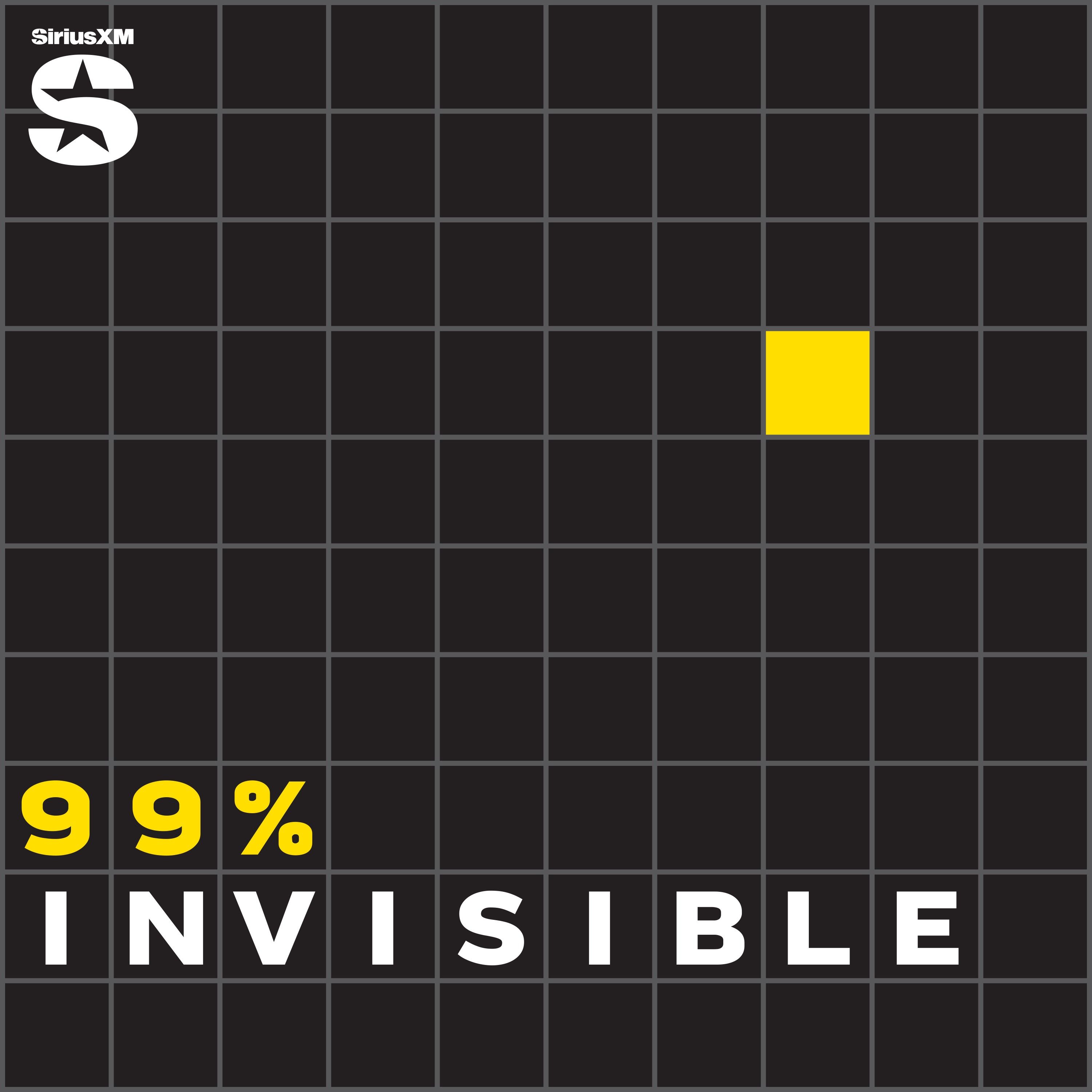
99% Invisible
Roman Mars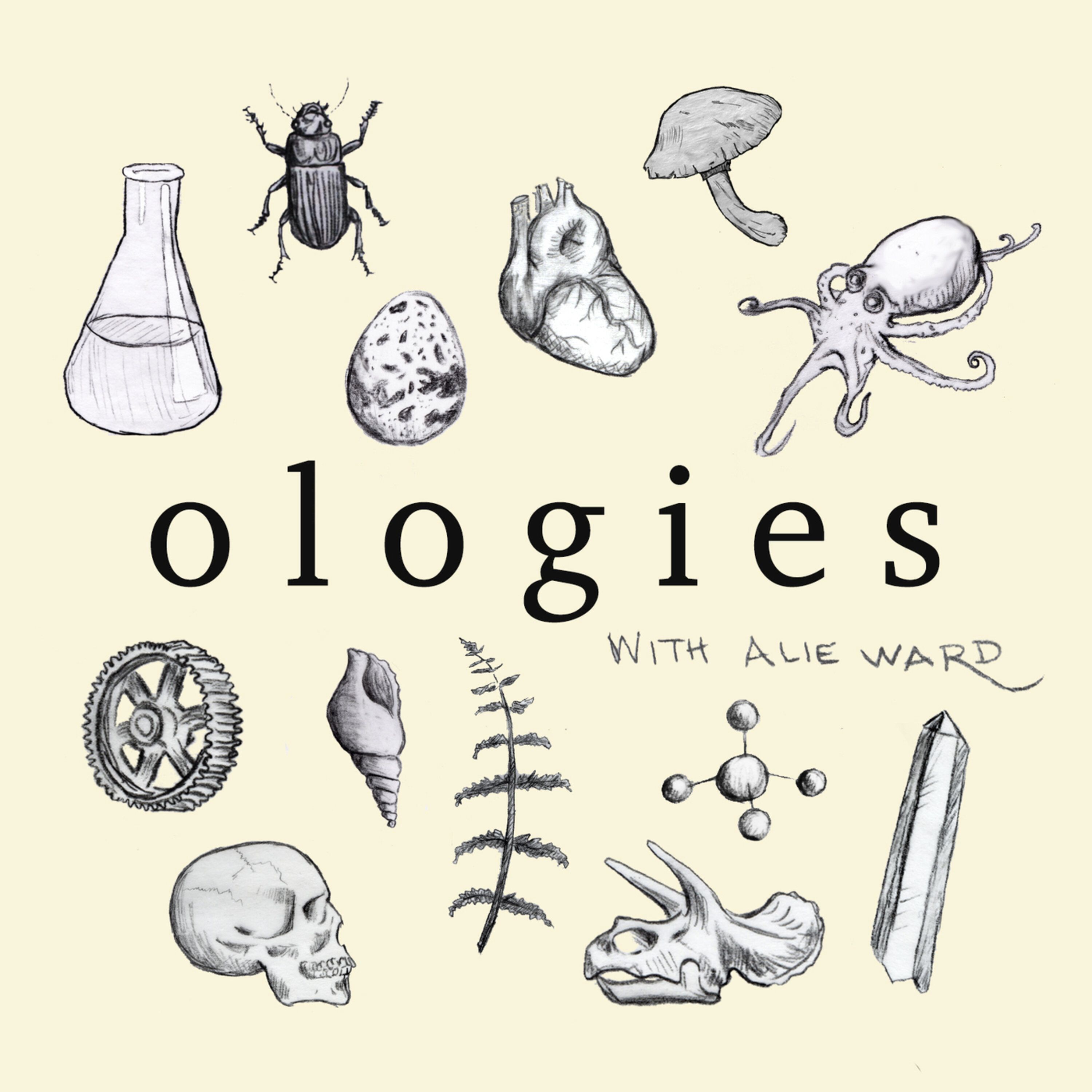
Ologies with Alie Ward
Alie Ward
Pod Save America
Crooked Media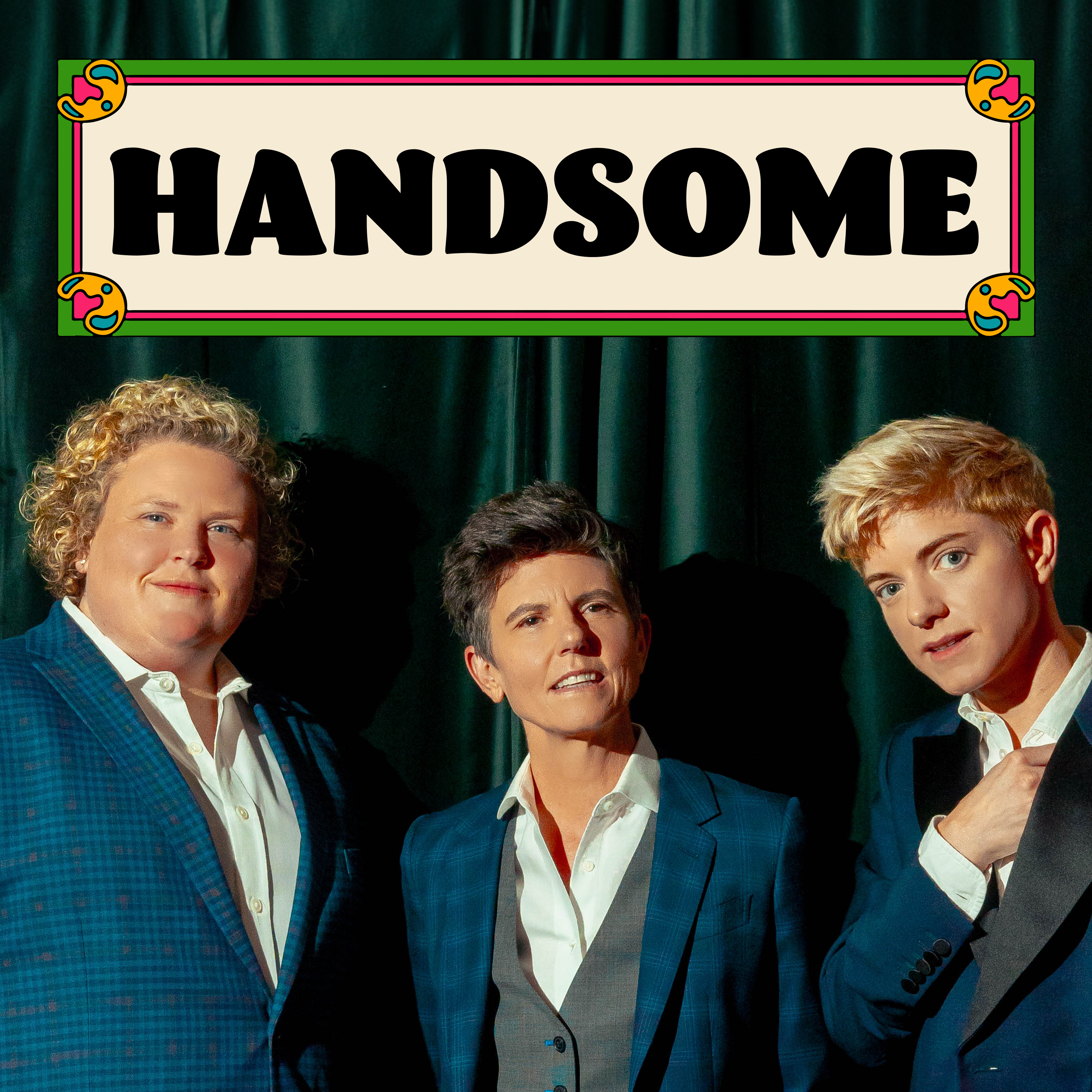
Handsome
Headgum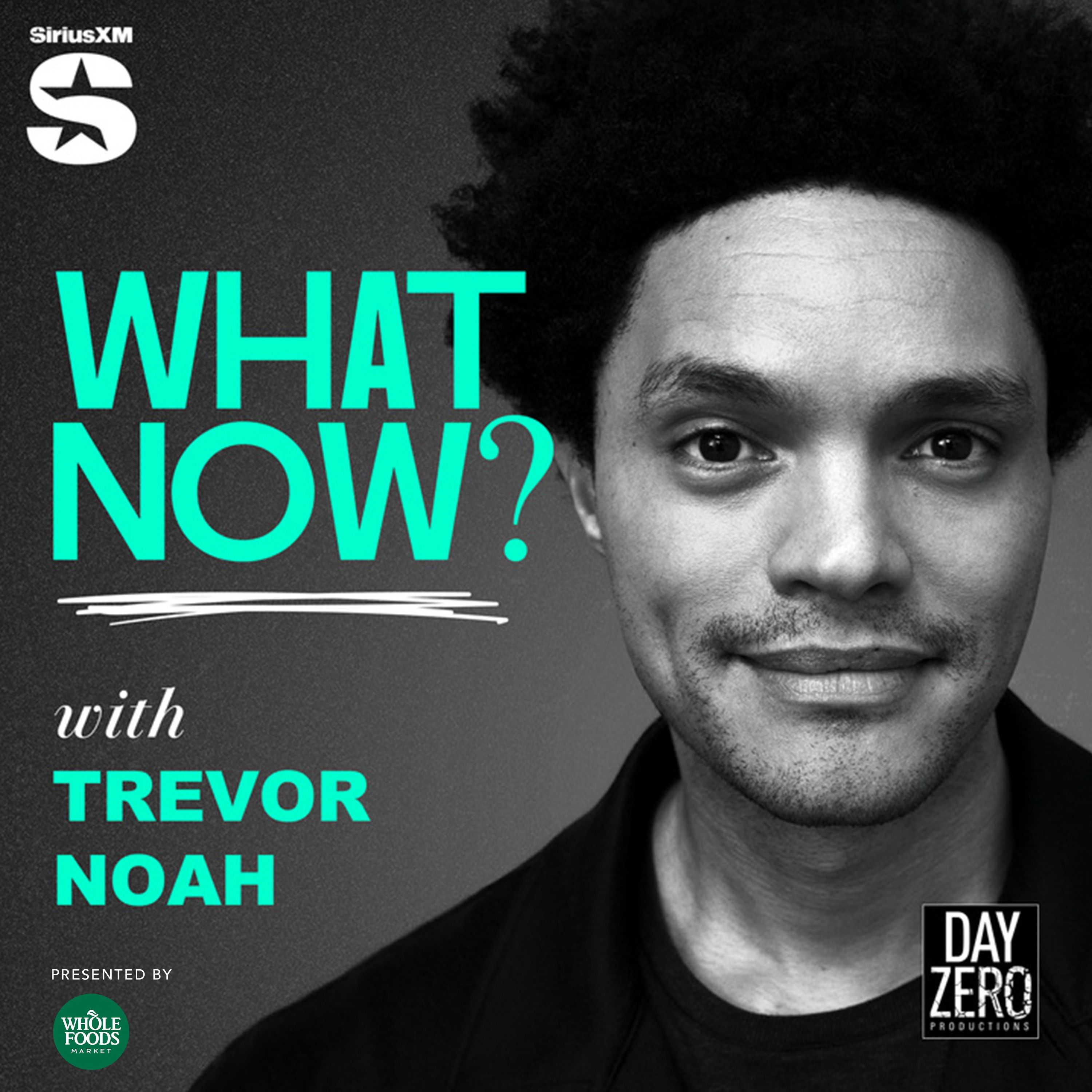
What Now? with Trevor Noah
Trevor Noah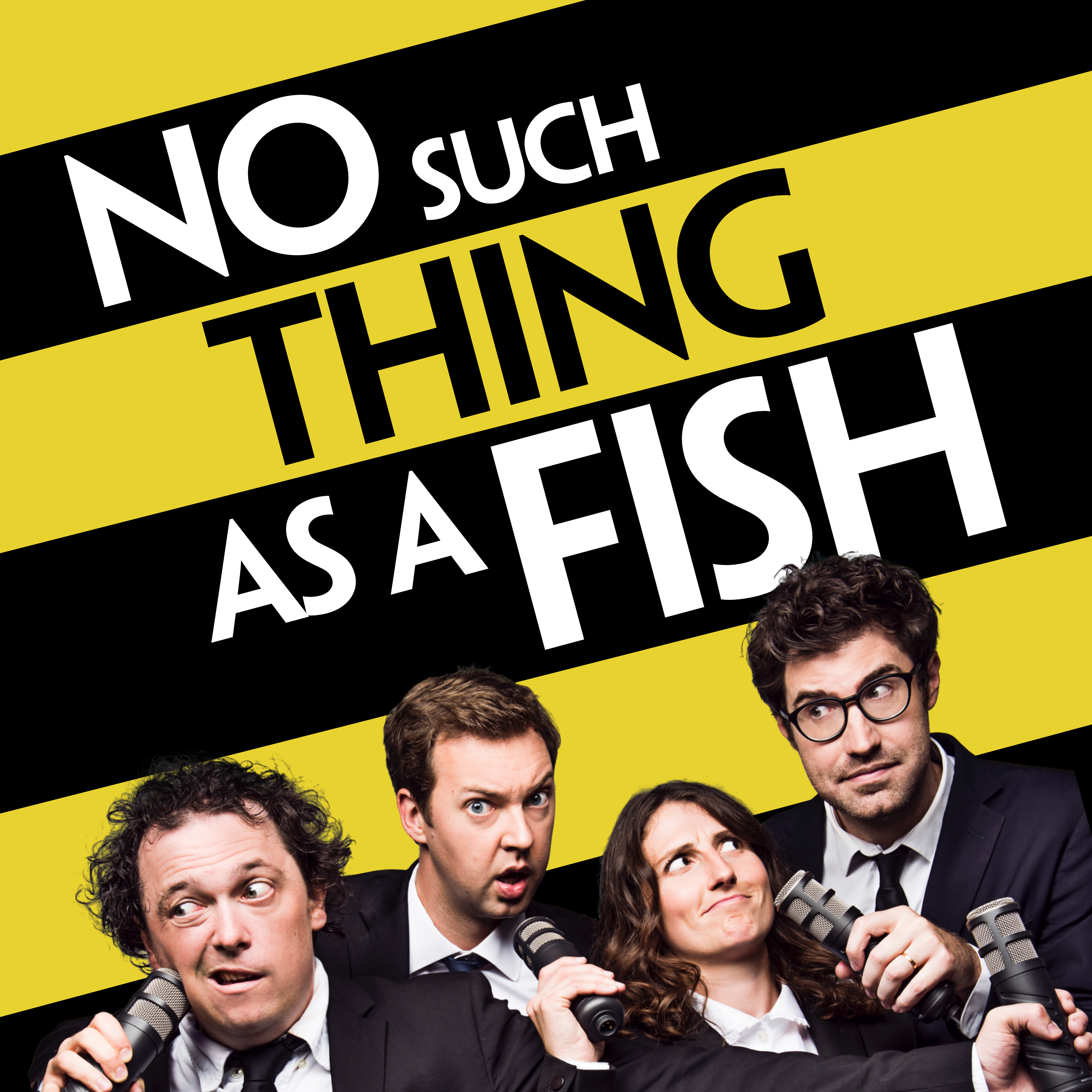
No Such Thing As A Fish
No Such Thing As A Fish
Throughline
NPR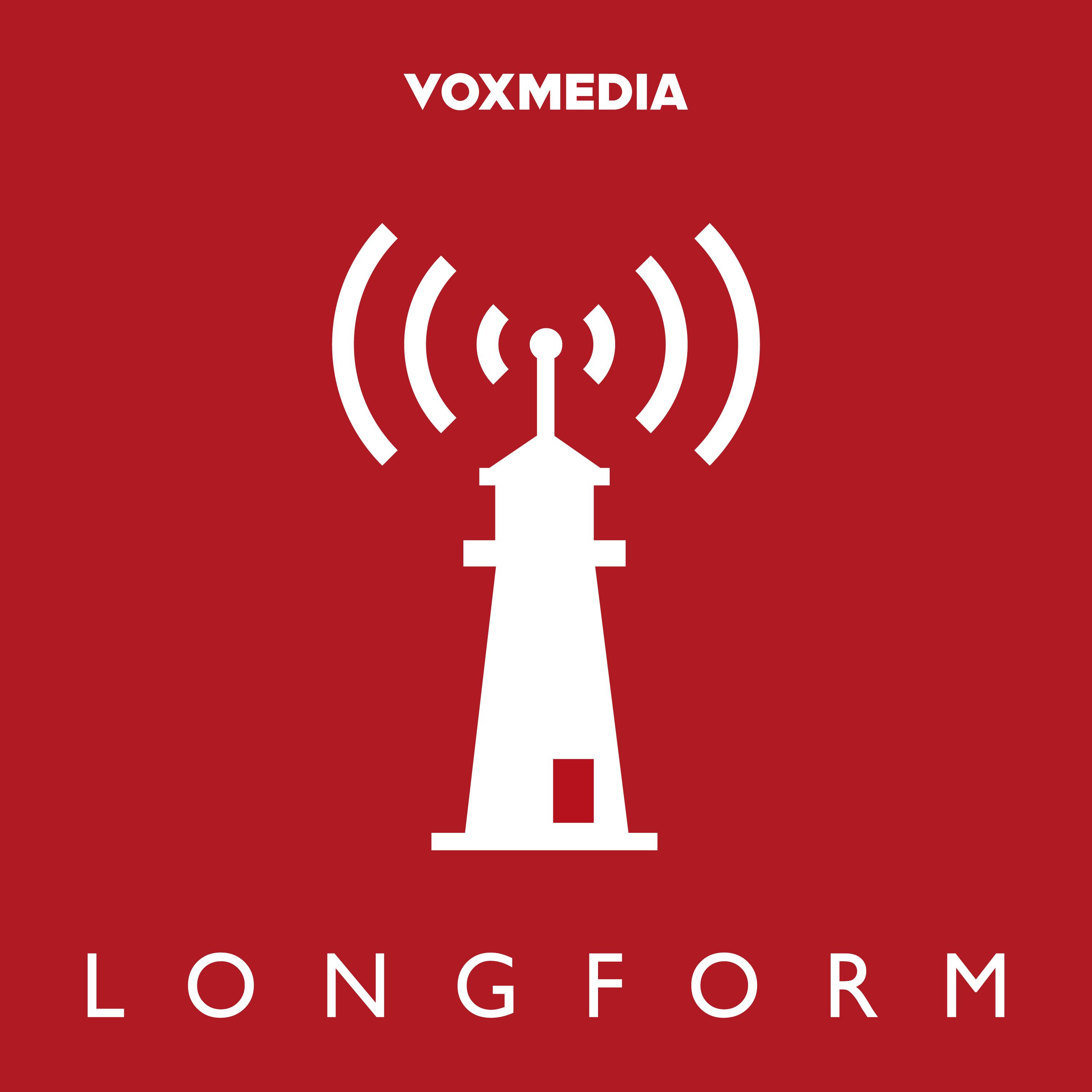
Longform
Longform

